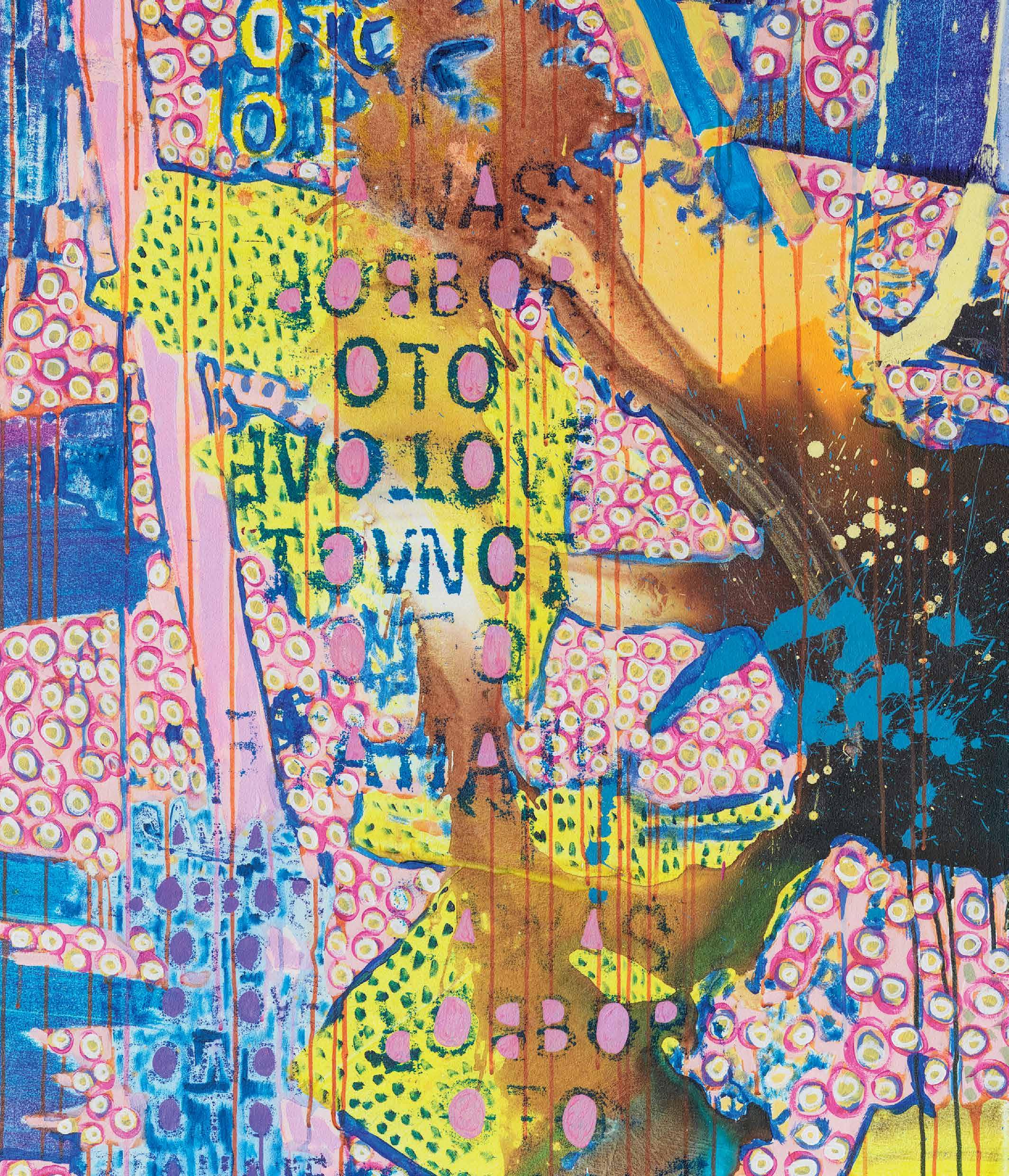ALEXANDRA GRANT



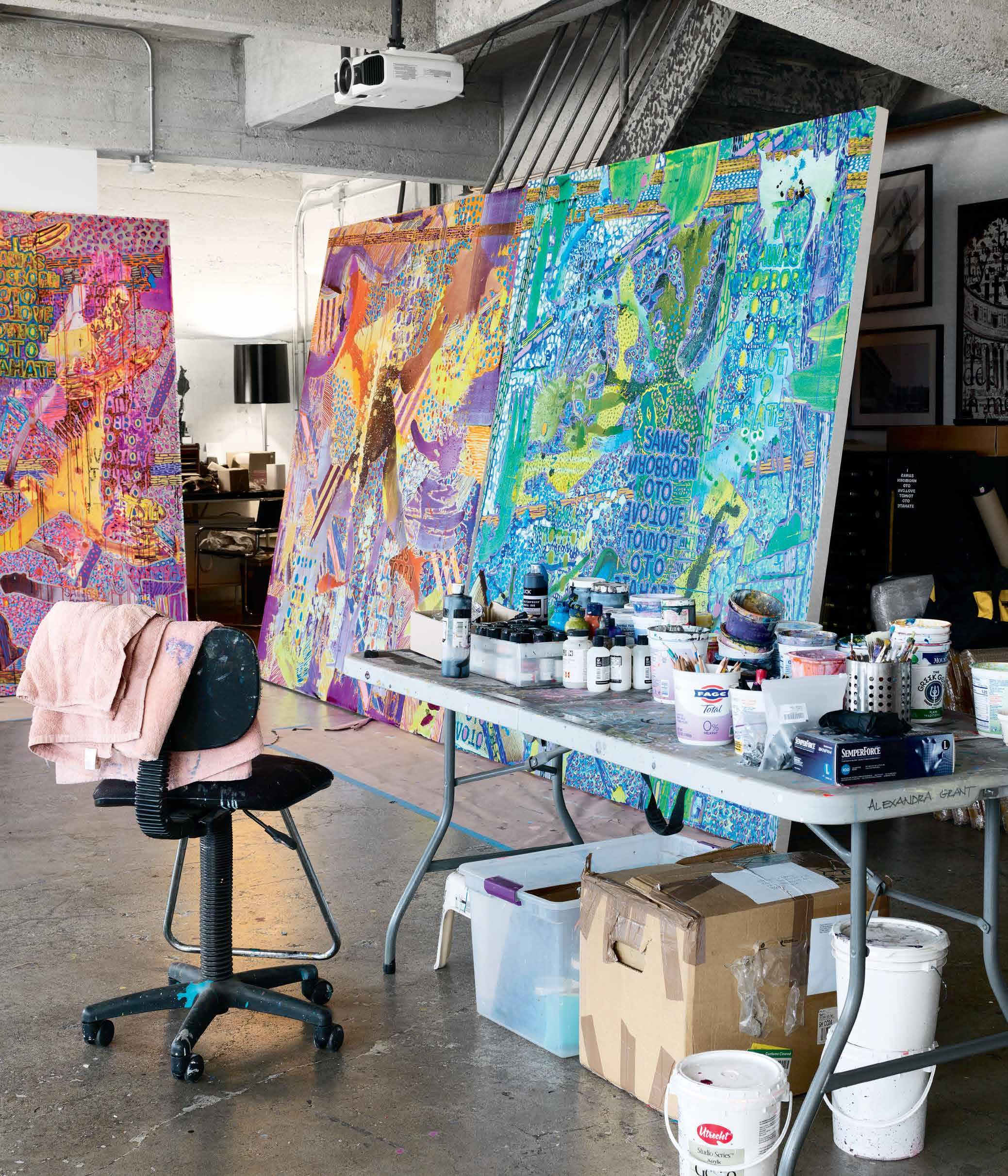
I was born to love, not to hate.
—Antigone (in her namesake play by the Greek playwright Sophocles)
I visited Alexandra Grant in Los Angeles in mid-December 2022. The six paintings in this show were near completion, awaiting final resolution by the artist over the next month. We spent an evening and a morning talking about the artwork before embarking on a brief hike, and then I took off for the airport, filled with the visual and conversational riches of our visit. The conversation flowed to literature, philosophy, art, the context of this work within her own practice and within larger Western culture, parallels between Western and Eastern literary traditions that feature the “sacrificial female,” and our own personal lives and experiences. (I first met Alexandra in 2009 at her studio in The Women’s Building in Los Angeles when I was a curator at the Orange County Museum of Art and organizing the 2010 California Biennial. Much has changed, and much has stayed the same since that time. Words, language, and literature remain her terra firma and supply the brodo in which Alexandra brews her personal brand of nonfigurative yet narrative art.)
When I asked her about the impetus for this body of work, Alexandra mentioned Michael Brown. In 2014, the unarmed teenager was shot and killed by a police officer in Ferguson, Missouri, while walking home with a friend. His body was left on the ground untouched for hours afterward. In response to this act of violence against Brown and the lack of dignity for his deceased body, Grant turned to the ancient Greek tragedy Antigone for solace and context.
Antigone was a dutiful and devoted daughter and sister in a true soap opera of a tragedy by the Greek playwright Sophocles. She remained with her blind father Oedipus when he was exiled from Thebes. The fulcrum of her personal story hinges
on the death of her brother Polynices—killed at the hand of another brother with whom he was fighting for the throne of Thebes. Her uncle, Creon, the king, forbids anyone from mourning or burying Polynices, leaving his body in the road for dogs and vultures to consume. Antigone defies the king to honor and bury her brother. When her disobedience is discovered, she responds to a rageful Creon, “I was born to love, not to hate.” For answering to a higher power beyond the rule of law and honoring the body that the king dishonored, she is sentenced to death. Her words became a mantra for Alexandra, the rhetoric around which to build a series of paintings and investigate language, identity, power dynamics, and transformation. She explains:
These paintings are about human patterns and about the desire to console myself, and perhaps in that expression other people will find consolation. They are in a tradition of painting, a modern tradition, an abstract tradition, but inserting this young girl’s voice into that space that has been dominated by wordlessness and men, people might actually listen.1
The paintings in this show filled Alexandra’s studio when I visited her, leaning against walls and support pillars, along with works of various sizes, intended for other shows and projects, on perimeter walls and spilling across the floor. We spent the morning walking around the workspace, perusing and discussing each painting. (The selection for Miles McEnery Gallery, Alexandra’s first solo show in New York, is a small and perfectly formed body of work. Each composition has its own contained universe, yet the compositions are interrelated.) Untitled at this point, we numbered the canvases one through six for simplicity’s sake. The works were roughly paired based on color: “two green, two blue-purple, and two that have a strong orangey [color]. I’m exploring that sort of twinned idea,” explained Alexandra. The works are now titled Eclipse and Accidental Dignity, Cazimi and Parallax, Semaphore and Twilight (all 2023). These are no diptychs, however. They are dual explorations in color, tone, pattern, and form. All measure 90 x 80 inches, with acrylic ink, acrylic paint, and silkscreen acrylic paint. They are large enough to hold a gallery wall but not so large as to overwhelm a domestic setting. They are also commanding, full-bodied paintings: When you approach, they
envelope you whole. They are taller than the viewer, like altars or portals to step into, in which one is subsumed. They invite you into the multiverse.
When Alexandra discusses the act of painting the large-scale works in the series Antigone 3000, it becomes clear that the narrative of the play provides a baseline structure for the paintings. The horizontal, vertical, and diagonal lines that punctuate many of the compositions represent the “rule of law”; the serendipitous “pours” of paint and the resulting drips are “the messiness of life”; and the Rorschach-like text of Antigone’s words reverberate throughout the field of abstraction, representing the “natural law” she followed. (In response, we may ask ourselves, “Do you defy orders to do what is right? Do you answer to the rule of law or to a higher law? Do you look beyond the rigid rules to a chasm of meaning and principle that may swallow you whole?”) In the beginning of this series, the paintings were abstracted narratives of this tragic dynamic. As Alexandra has continued working on the series since 2014, her vision has exploded this bind and provided space for new formal and conceptual considerations.
In the studio, Alexandra mentioned that Sophocles’ text is formally “deteriorating” in her most recent compositions. She explained that the mirrored Rorschach-like text “I was born to love, not to hate” was previously applied to her paintings as a wax rubbing on large pieces of paper—a time-consuming process only possible on paper. In order to work on canvas, she now applies it as a silk screen of the original rubbing—conceptually identical, physically more efficient. She also started to use color in addition to black ink for the screen-printed text, a change she adopted during the years she spent in Berlin during the COVID lockdown, experimenting. The text is present in two sizes in the paintings here; we’ll call them small and medium—identical versions in differing scales. The silk-screened text is inherently incidental-looking, not the solid lettering of newspaper print or letterpress, and with variations that come with a by-hand process. Alexandra approaches these prints as monotypes, with no single pull being the same. While she identifies the text as disintegrating, the compositions overall are also seemingly exploding. (The deep application of dots and patterning, the pours and fields of color, the squeegeed ink are indeed dissipating the text in areas, making it less legible and more glyph-like).
By the time I saw images of the completed work in mid-January, however, the large texts in some works had been reinforced in Grant’s iconic bubble letters with rippling concentric circles of color. In this way, the final work both pushes forward and looks back at her process and practice.
In her large-scale Antigone 3000 paintings from 2014 to 2020, the compositions are more rigid, more constrained. The horizontal, vertical, and diagonal lines, planes, and fields provide dimension in the earlier work, they feel indexical. The painted abstract areas scaffold the text in fields of geometric lines. These newest paintings, however, suspend the viewer in the cosmos. The compositions have exploded (or perhaps imploded) this structure, and there is a dizzyingly satisfying sense of compression and expansion. The architectonic superstructure has given way to amorphous accretions, palimpsests, and patterns—shattering the strictures to a sense of freedom or liberation. It is like floating in a primordial soup rather than navigating an indexical structure. These six works are at once a structural breakdown and a breakthrough.

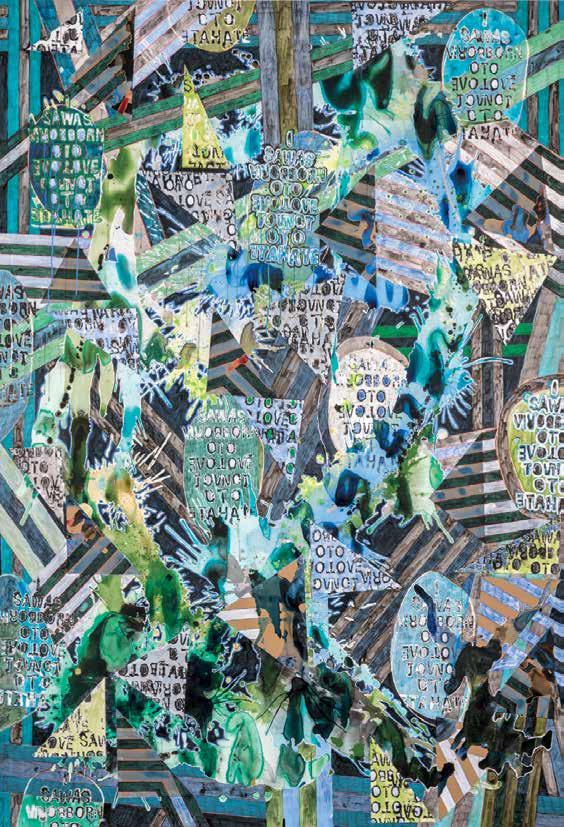
Alexandra discussed how she had pushed her painting techniques while she was living and working in Berlin in 2021 and 2022 during the COVID pandemic. The wax and paper rubbings were replaced with silk-screened versions of the text. (The original sculpture from which she was making the rubbings was in Los Angeles while she was in lockdown abroad.) The incidental pours and drips are still there, but stars and patterning were added, as was the addition of color ink for the text. (Antigone’s words are not locked in the rigid rule of law at this point but are suspended in a firmament of stars and fireworks and patterns.) The works have entered hyperdrive, emerging in supersonic, cosmic proportions from their previous bound iterations. By way of explanation, Alexandra states, “I’m a better painter because I’m painting to comfort.” The series has grown into a different, perhaps more comforting and therefore comfortable—and by that, I mean confident—period for her. While Alexandra mapped the story of Antigone in her earliest iterations in this series, she has now expanded her formal repertoire, deconstructing the compositional rules she initially established in order to live up to Antigone’s mandate: to really love. The compositional development of Antigone 3000 mirrors the process of transformation and transcendence inherent in the story of Antigone herself.
Before leaving the studio, I asked Alexandra what the current challenge is in her work. (So many artists have talked about how limitations and barriers have helped push their processes.) I wanted to know what irritant serves as motivating grease in her work. She responded, surprisingly: “Yellow is the biggest challenge. That’s the hinge in each one. When I think of de Kooning, I think of his hinge being pink. For me, yellow is the challenging color, which is why I wanted to engage it.”
Antigone’s response to oppressive power is—for Alexandra and in her work— a meditation, a directive, an act of kindness, an honor, a prescriptive, a prayer, a talisman, a hope, a maturation, a liberation. It is freedom.
Sarah C. BancroftAustin, Texas; January 2023
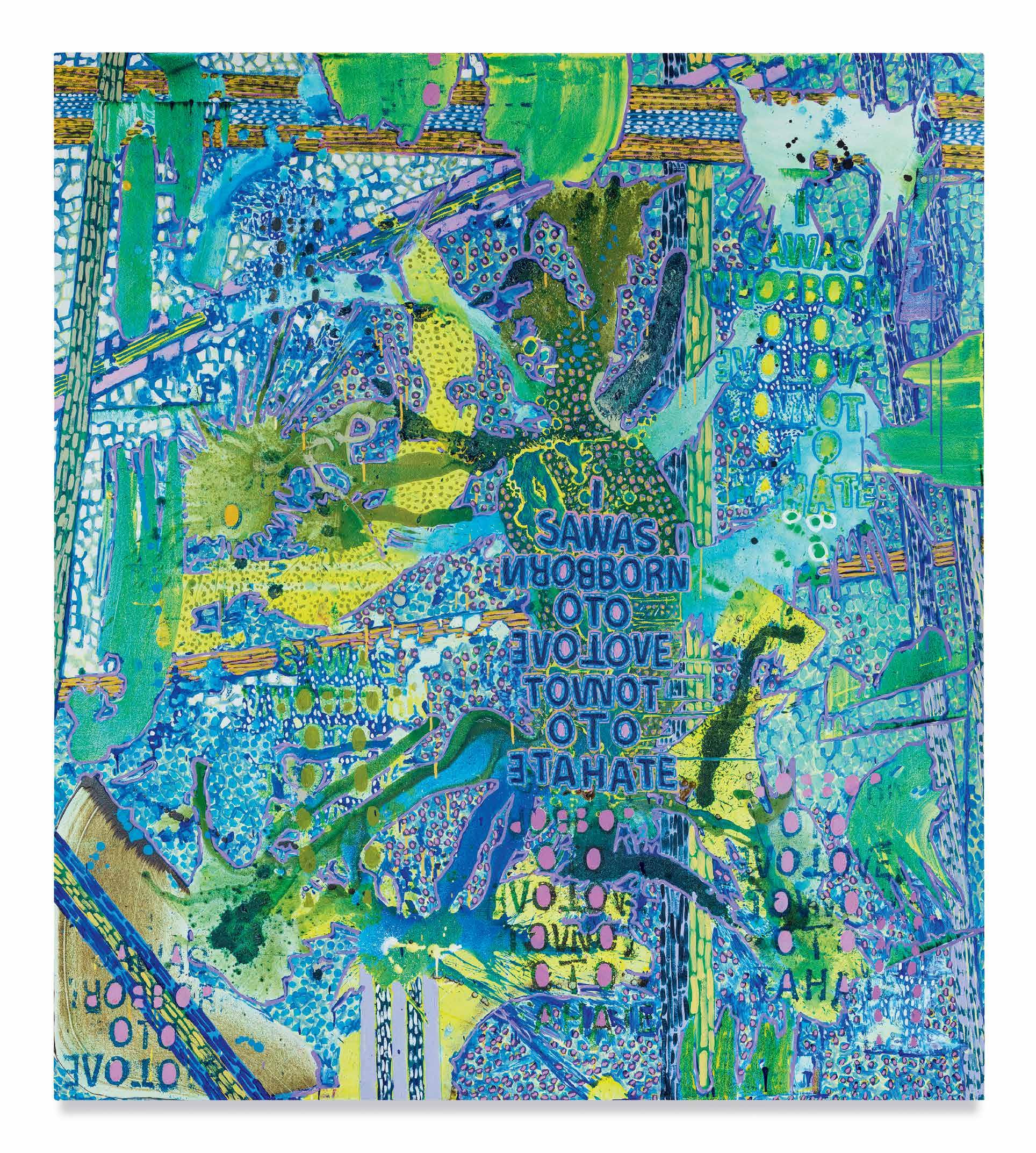

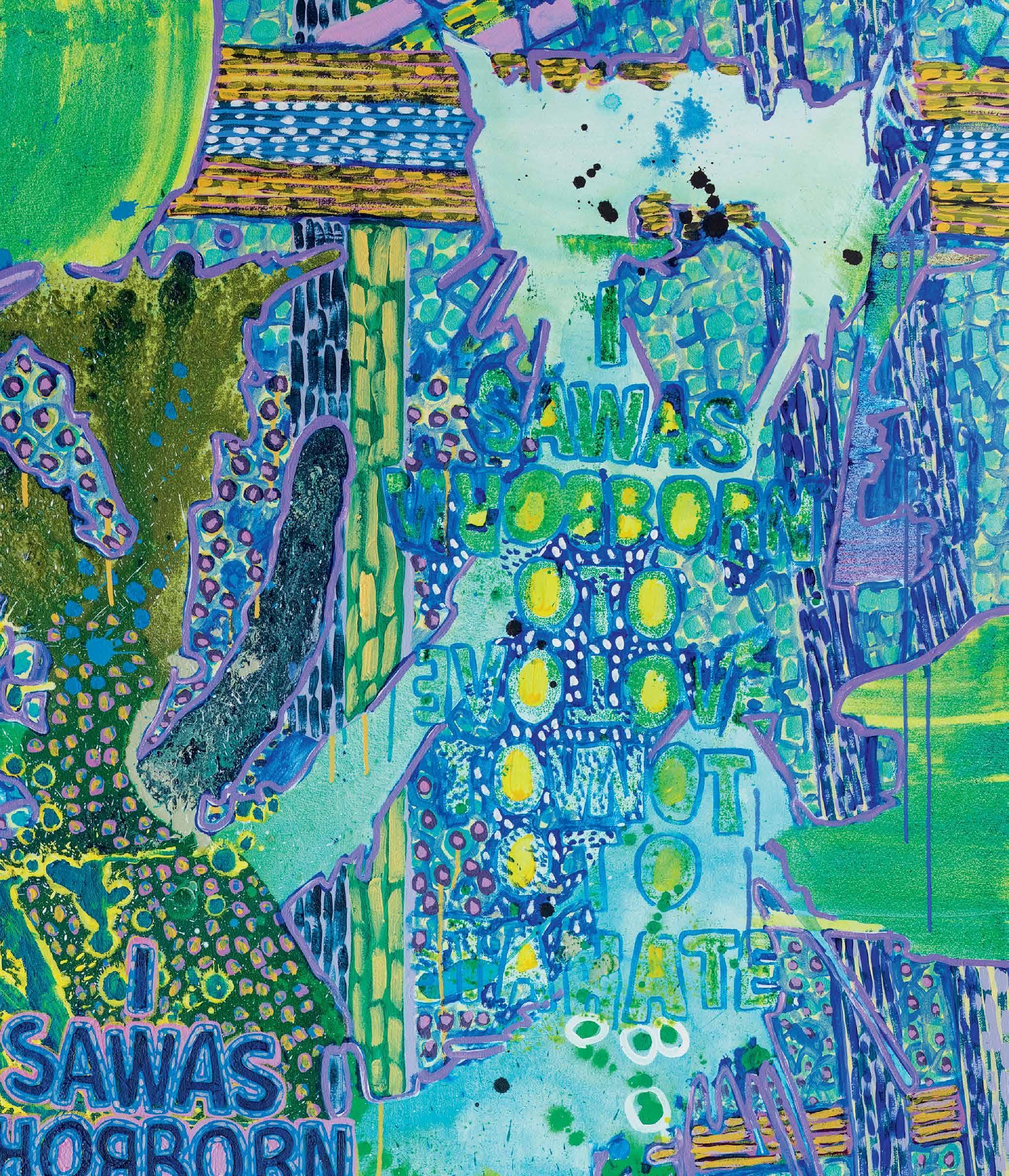
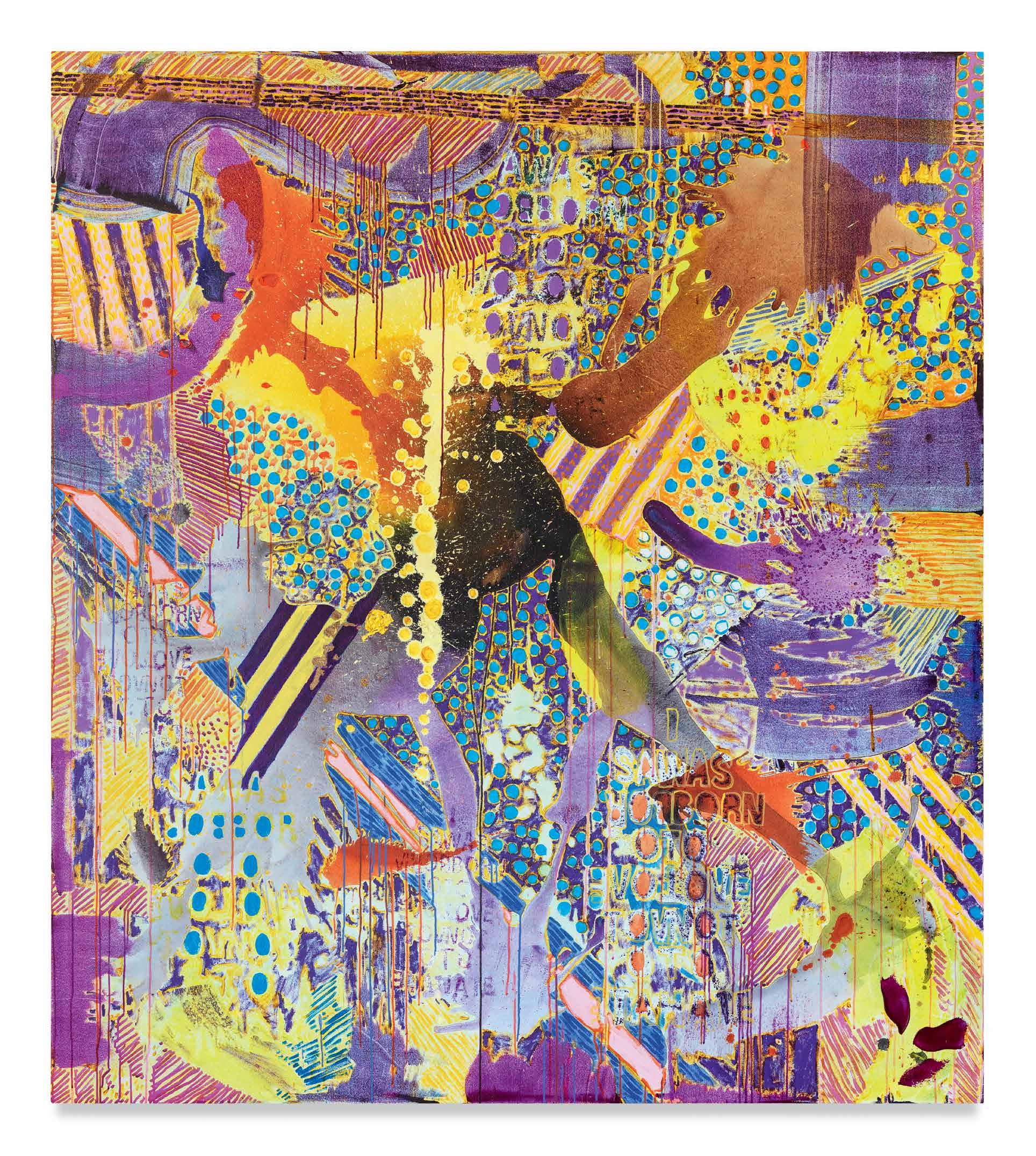
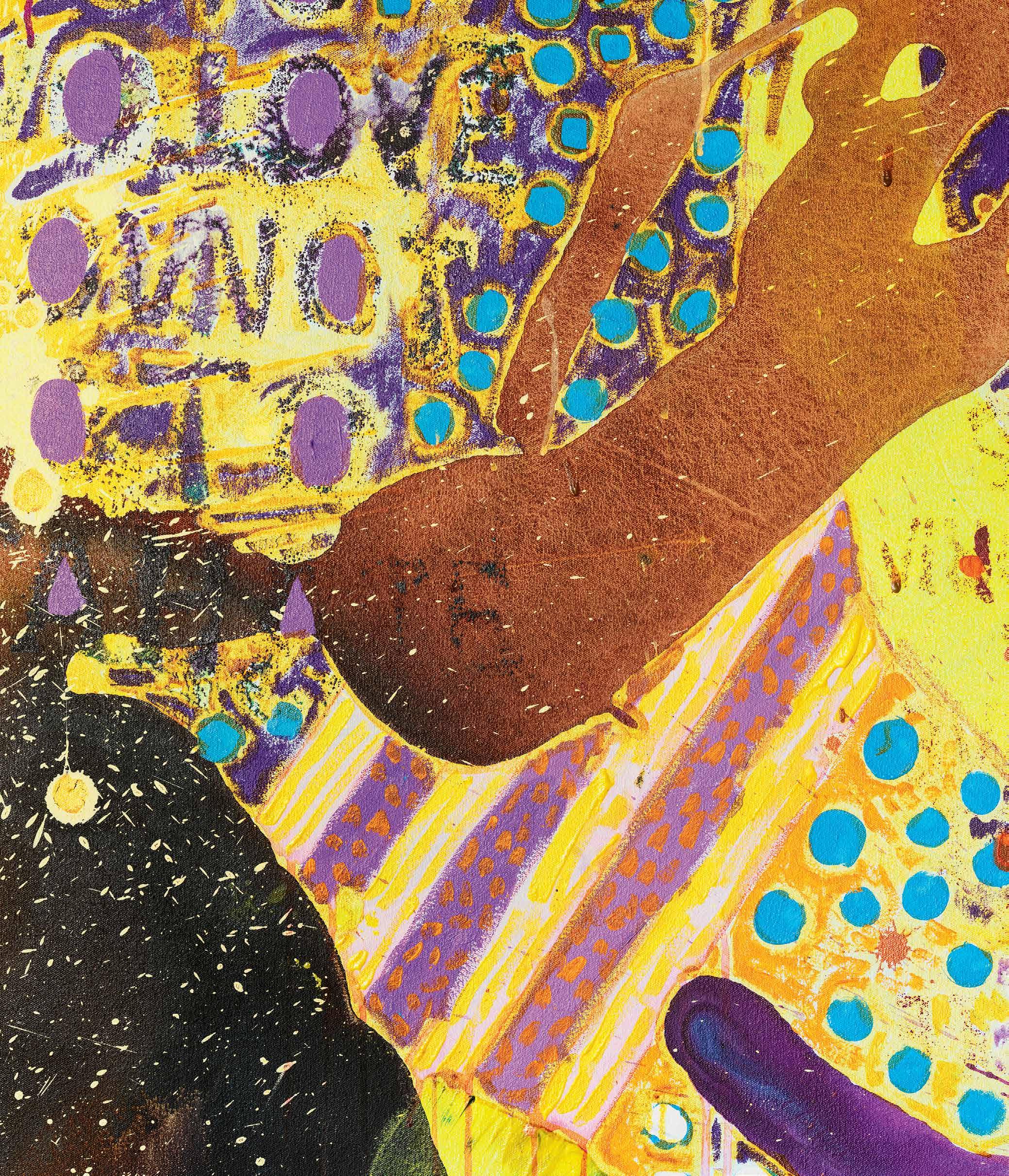
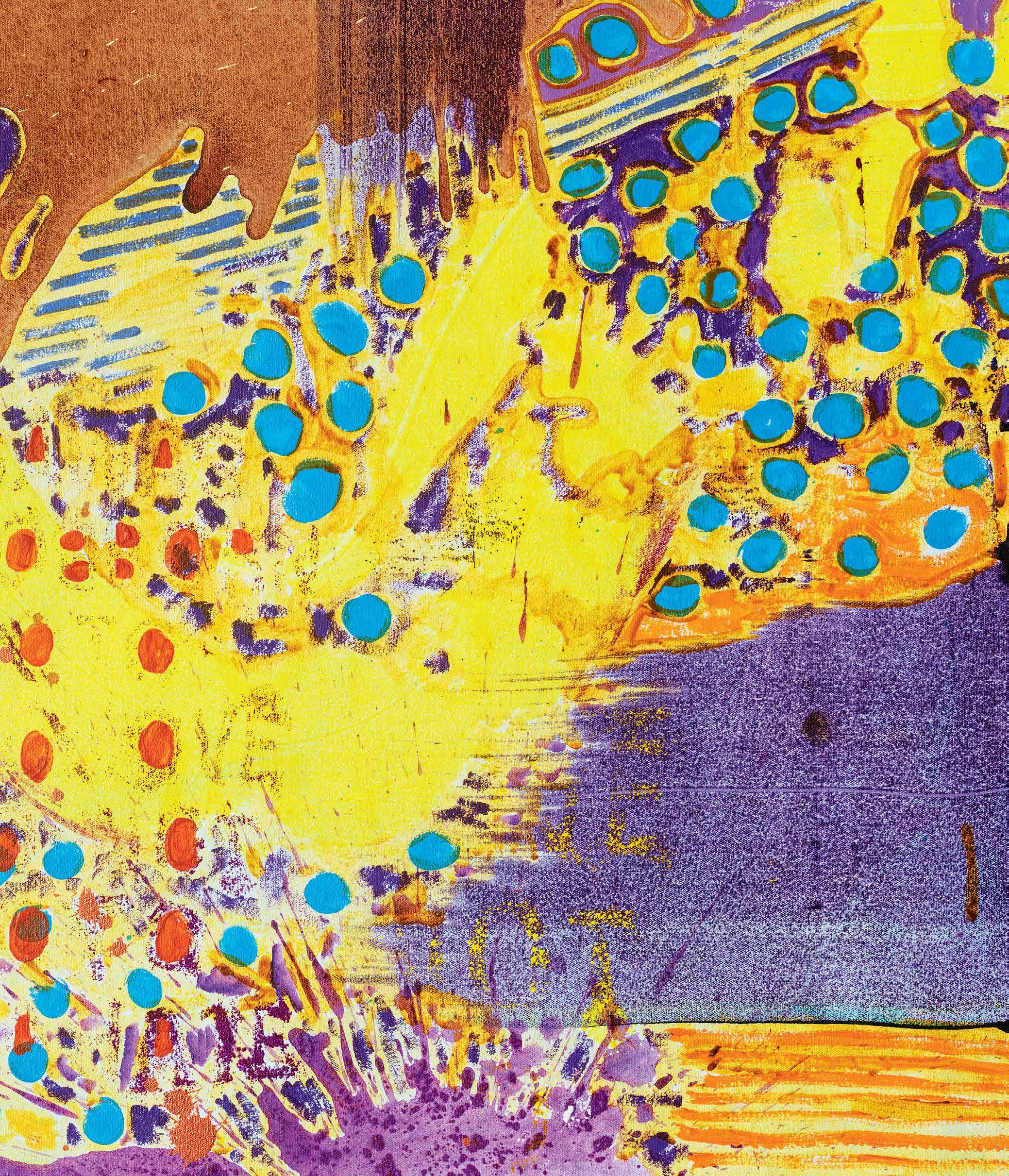

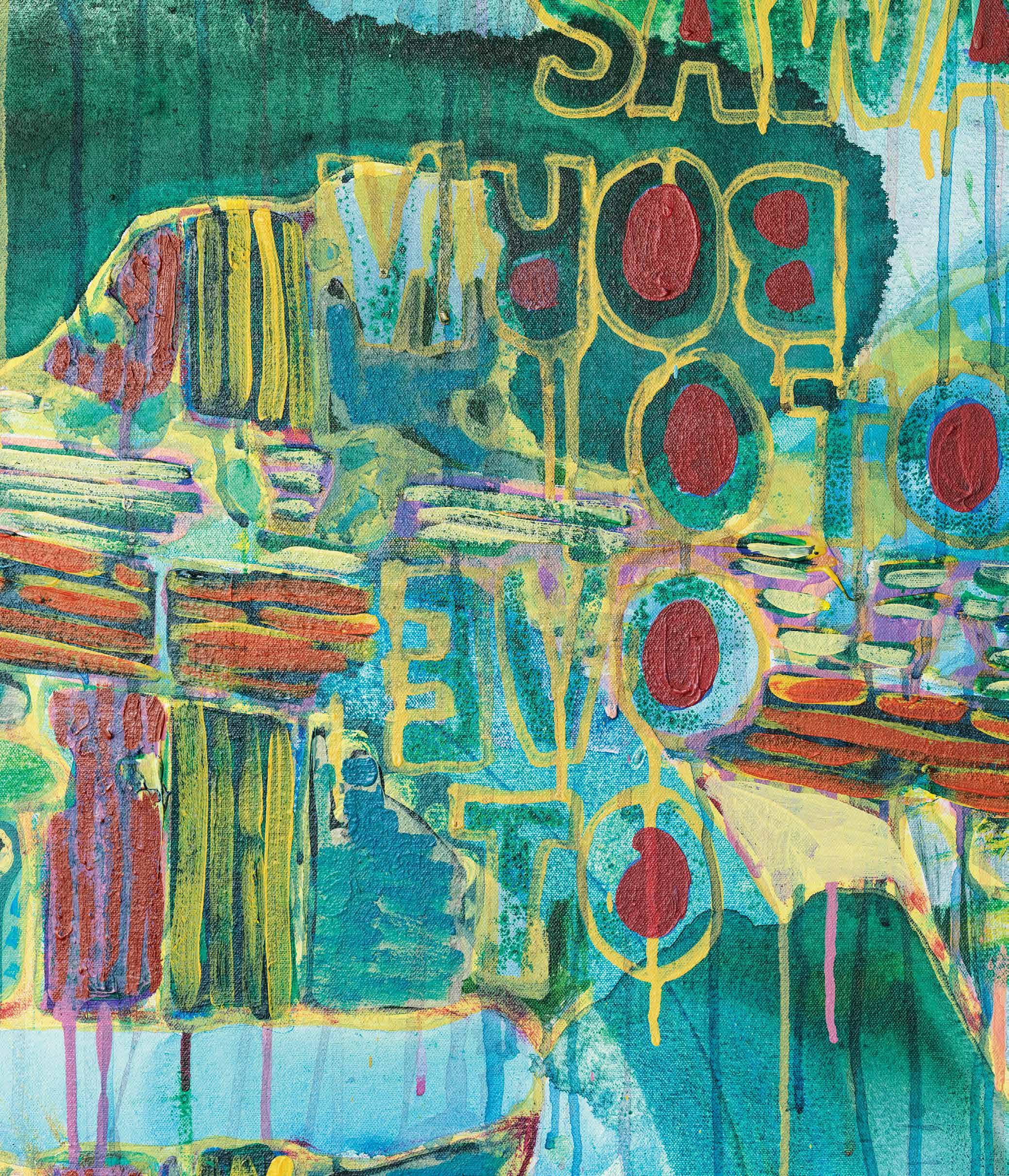
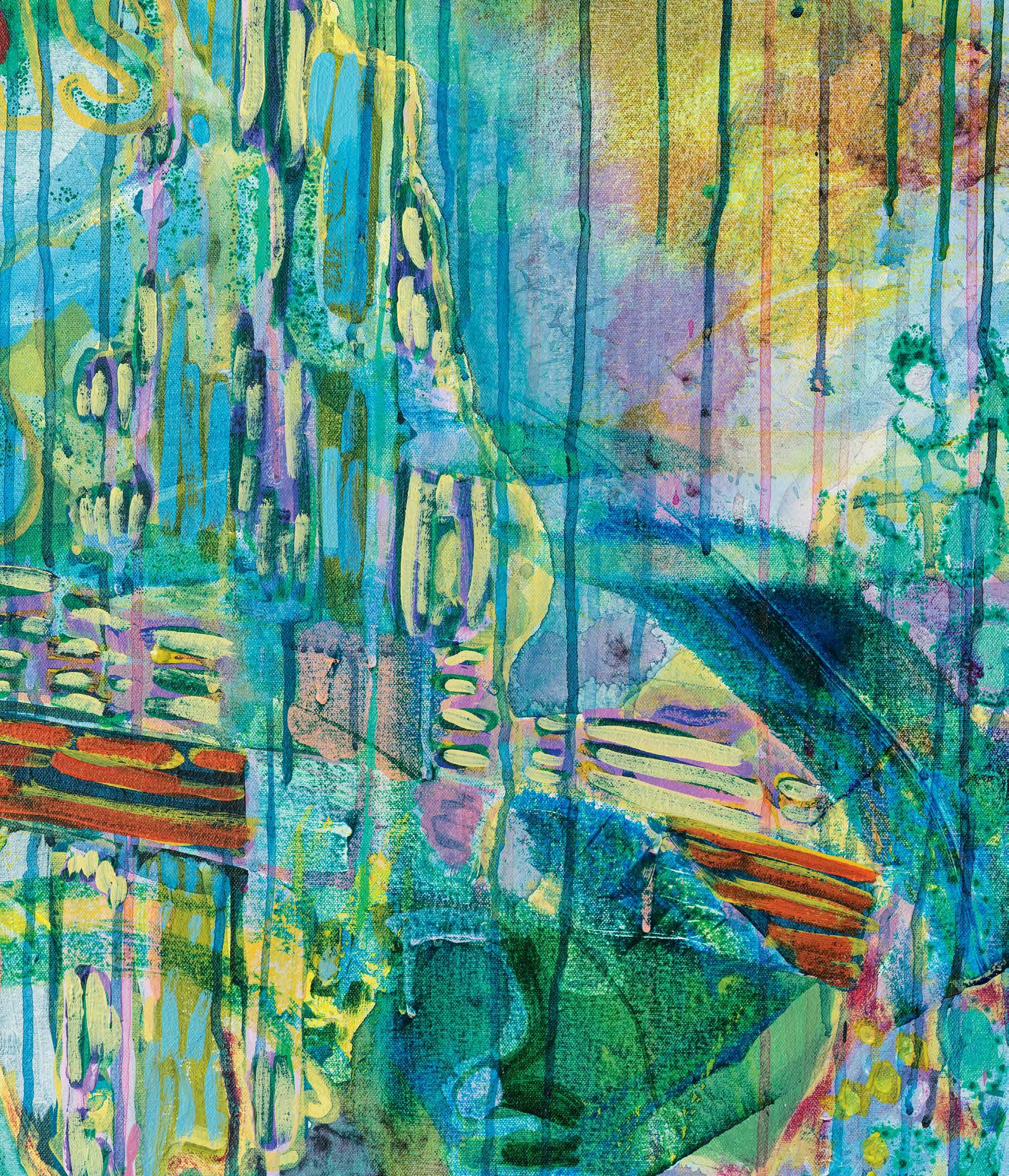


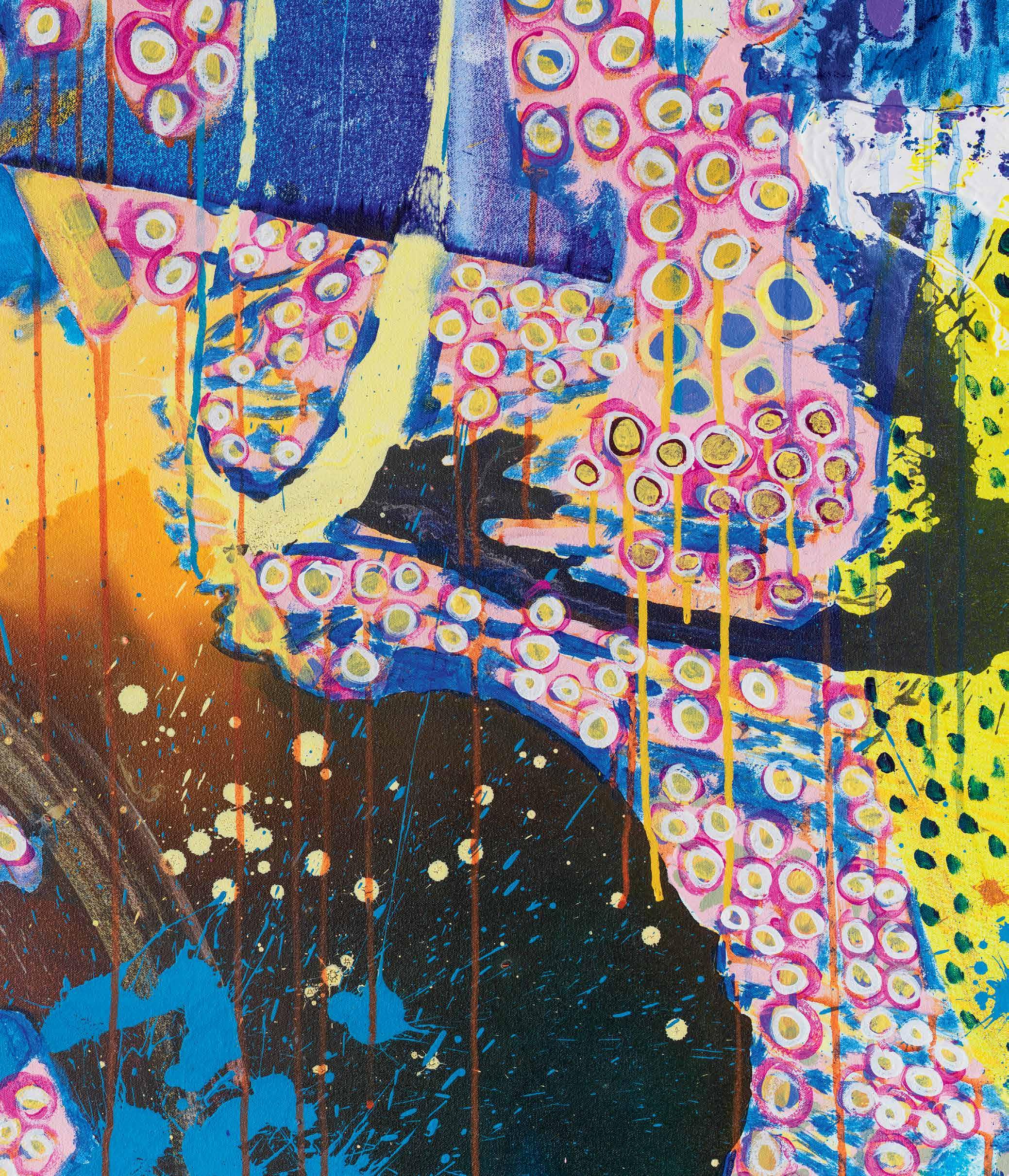
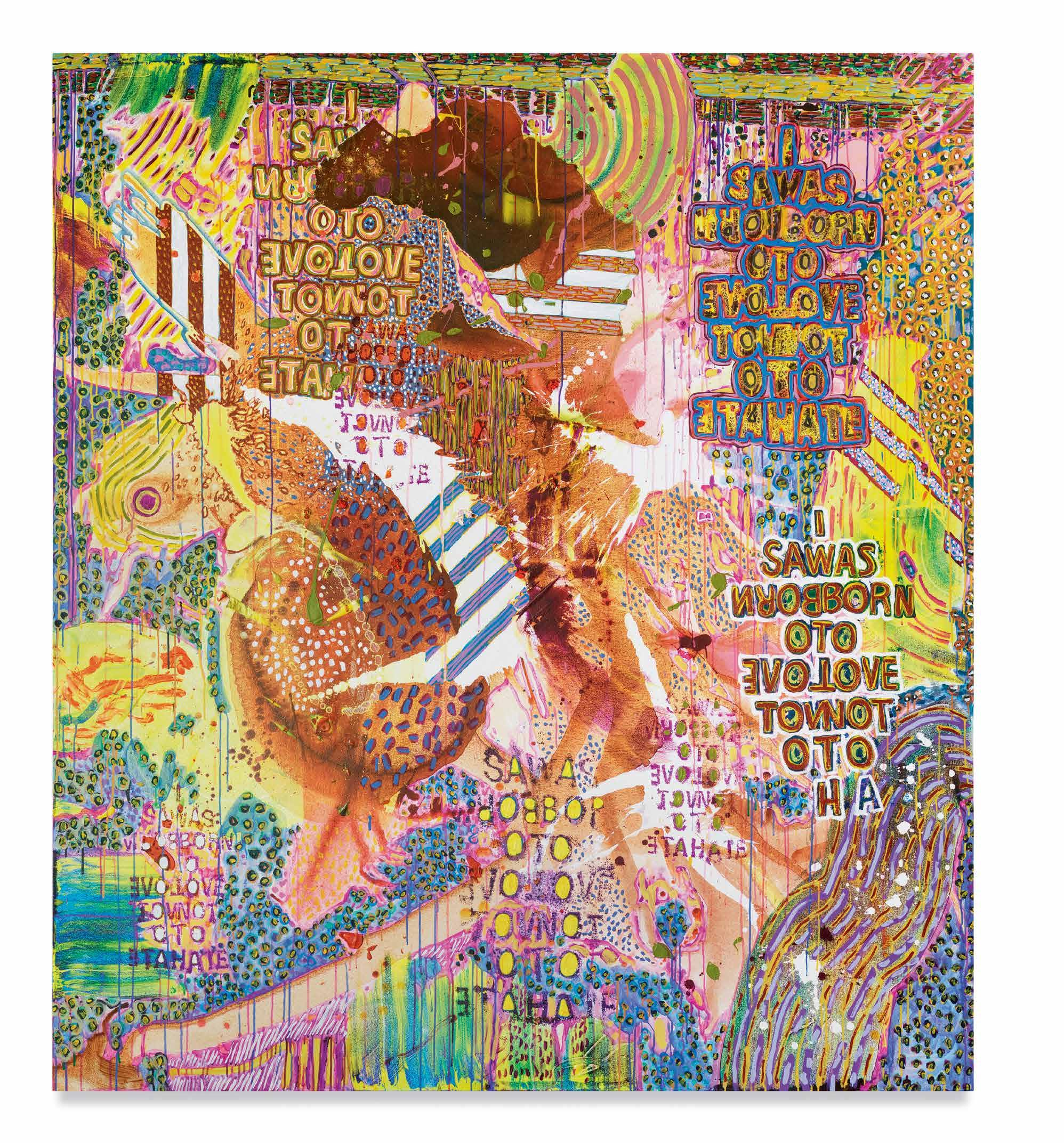



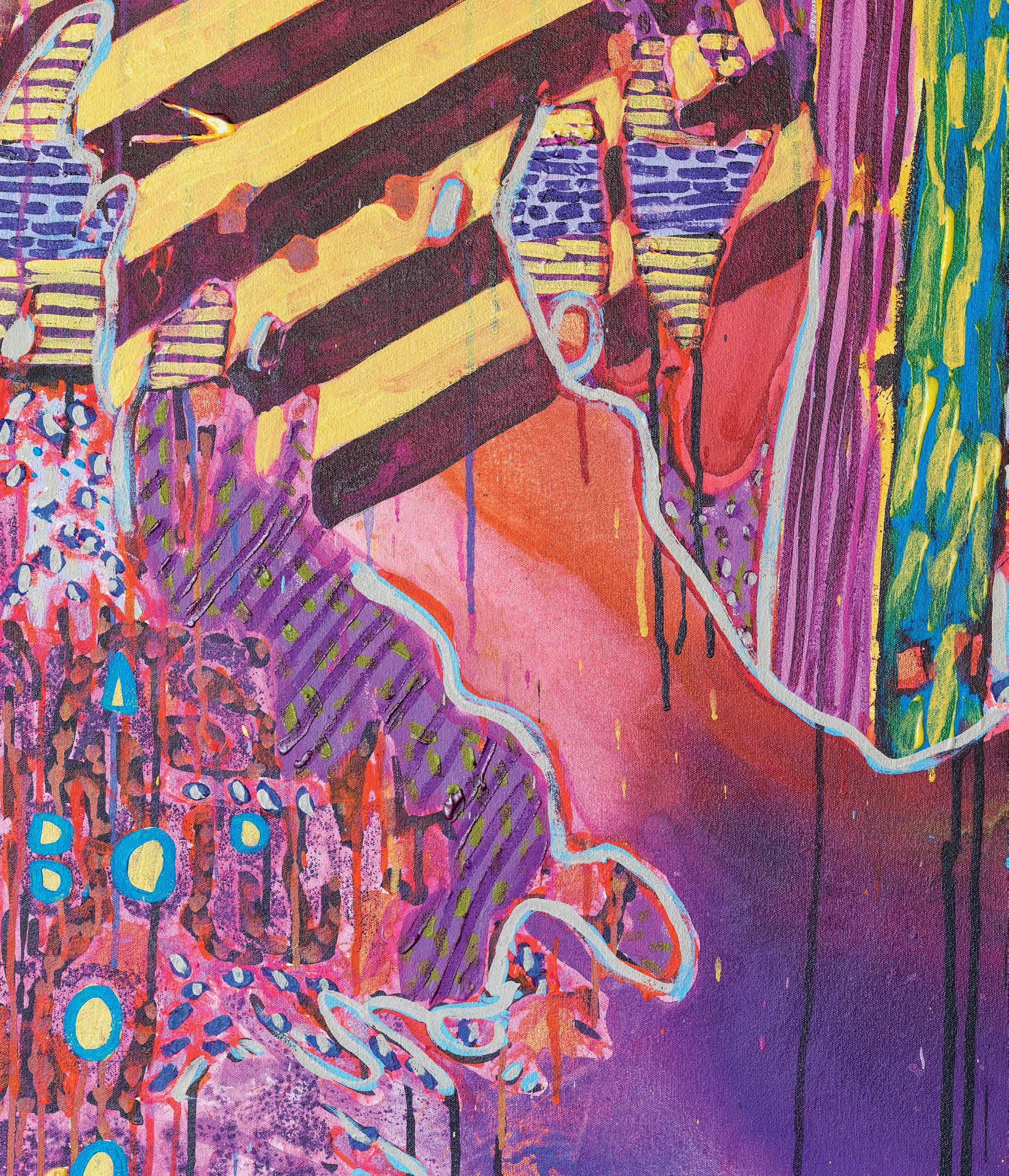
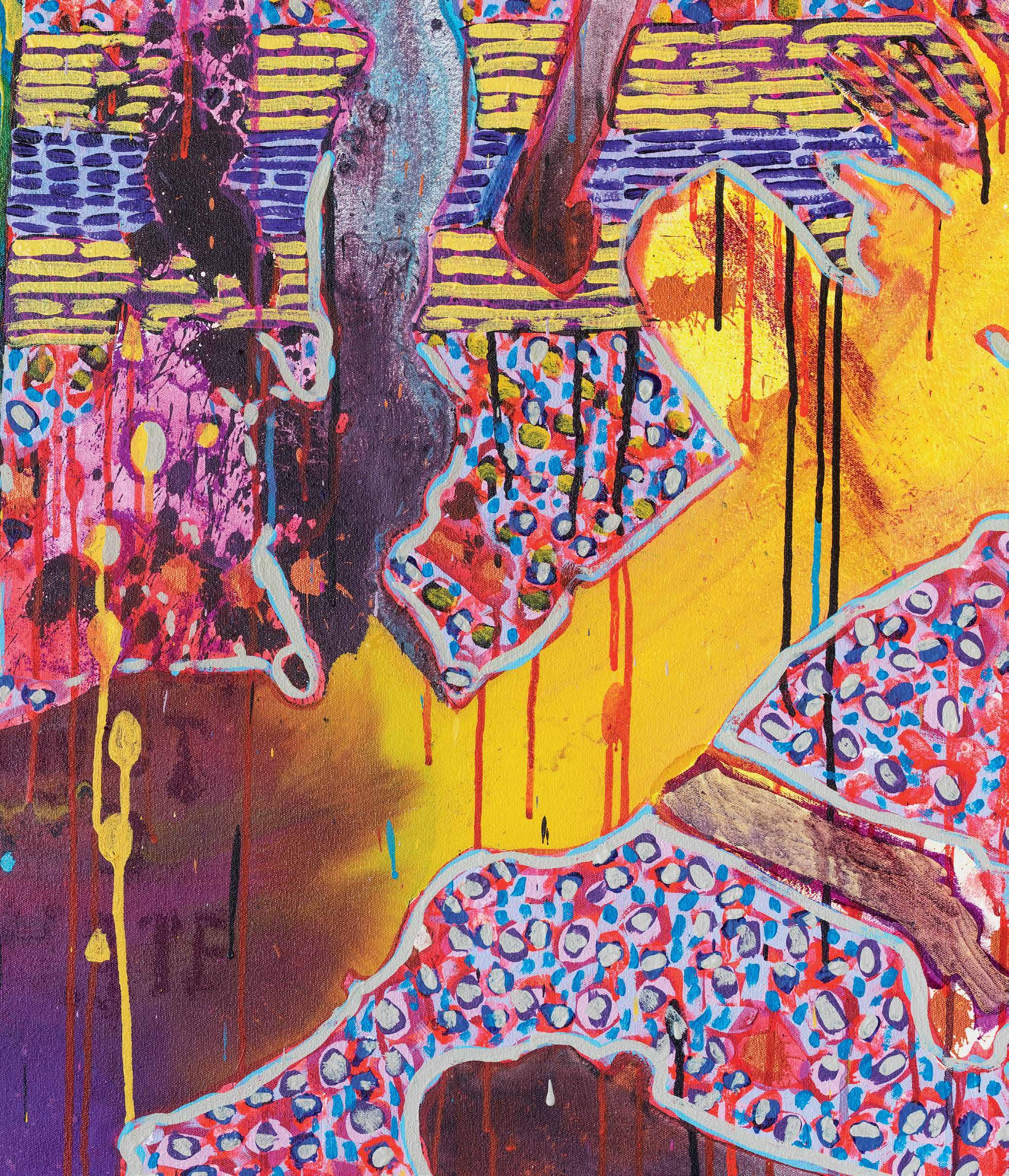
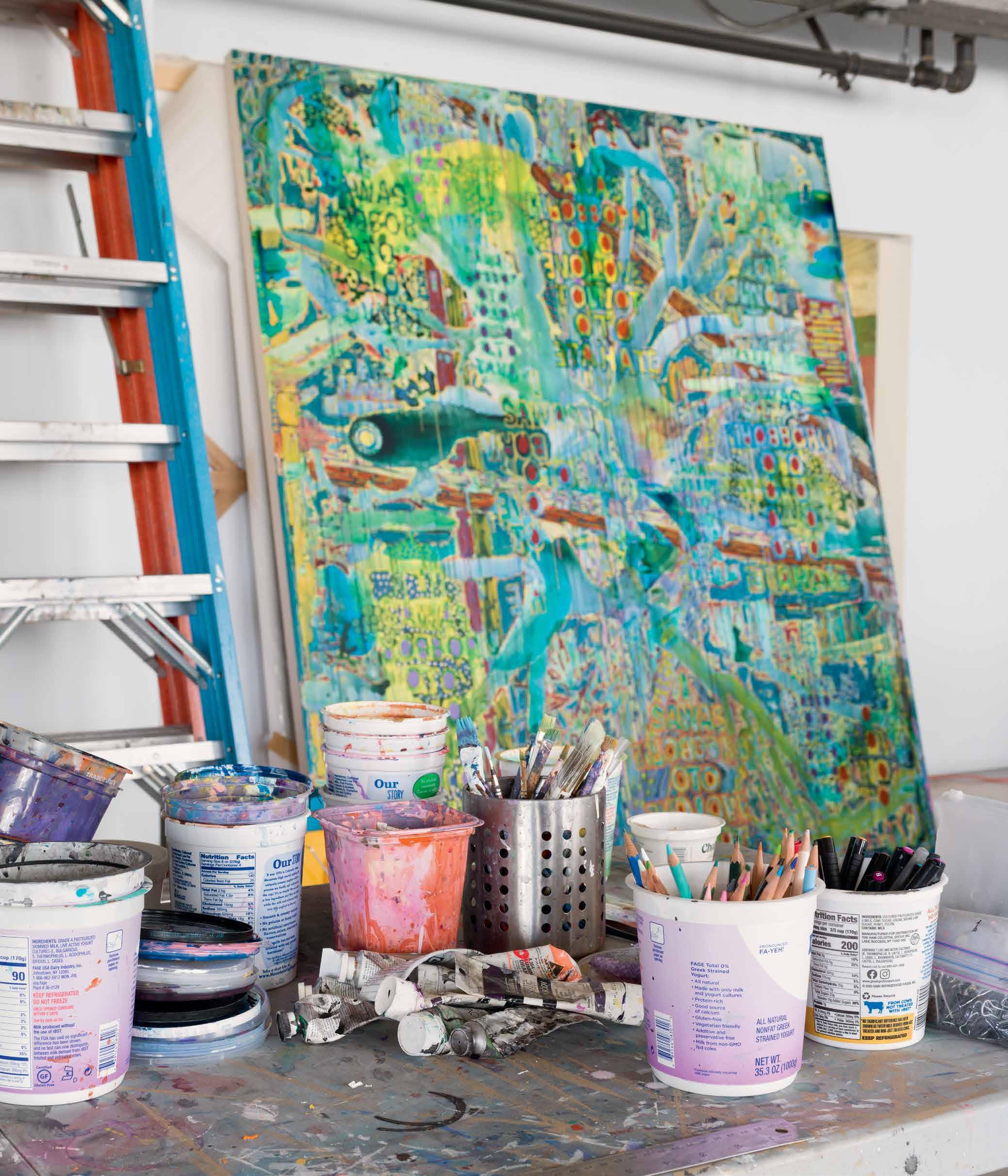
Born in Fairview Park, OH in 1973
Lives and works in Los Angeles, CA
2000
MFA, California College of Arts and Crafts, San Francisco, CA
1995
BA, Swarthmore College, Swarthmore, PA
2023
Miles McEnery Gallery, New York, NY
2022
“Mantra,” Positive Art Center, Seoul, South Korea
2021
OCHI Projects at the Marfa Invitational, Marfa, TX
2020
“Telepathy is One Step Further Than Empathy,” Orange County Museum of Art, Costa Mesa, CA
2019
“Born to Love,” Lowell Ryan Projects, Los Angeles, CA
2017
“Shadows,” Galerie Gradiva, Paris, France
“ghost town,” Galería Marco Augusto Quiroa en Casa Santo Domingo, Antigua, Guatemala
“Antigone is you is me,” Eastern Star Gallery, Archer School for Girls, Los Angeles, CA
2016
“Shadows,” Ochi Gallery, Sun Valley, ID
“ghost town,” 20th Bienal de Arte Paiz, Guatemala City, Guatemala
2015
“A Perpetual Slow Circle,” Ochi Gallery, Sun Valley, ID
2014
“Century of the Self,” Lora Reynolds Gallery, Austin, TX
2013
“Forêt Intérieure/Interior Forest,” Mains d’Oeuvres, Saint Ouen, France
“Forêt Intérieure/Interior Forest,” 18th Street Arts Center, Santa Monica, CA
2011
“The Womb-Womb Room” (collaboration with Channing Hansen), Night Gallery, Los Angeles, CA
2010
“Bodies,” Honor Fraser Gallery, Los Angeles, CA
2008
“A.D.D.G. (aux dehors de guillemets),” Honor Fraser Gallery, Los Angeles, CA
2007
“MOCA Focus Show” (curated by Alma Ruiz), Museum of Contemporary Art, Los Angeles, Los Angeles, CA
2004
“Homecoming,” Gallery Sixteen: One, Santa Monica, CA
2022
“When We Grow Up” (curated by Daniela Soberman), Gallery SADE, Los Angeles, CA
2021
“It’s My House!,” CURA Art with Porch Gallery, Ojai, CA
“Art and Hope at the End of the Tunnel,” USC Fisher Museum, Los Angeles, CA
“The Youngest Day,” carlier|gebauer, Berlin, Germany
2020
“Motel,” Peralta Projects, Denver, CO
“LA: Night & Day,” The Lodge, Los Angeles, CA
2019
“Oneiric Landscapes,” Five Car Garage, Los Angeles, CA
2018
“The 40th Anniversary Show,” Fredric Snitzer Gallery, Miami, FL
2017
“Flaming June VII (Flaming Creatures),” Gavlak Gallery, Los Angeles, CA
2016
“L.A. Exuberance: New Gifts by Artists,” Los Angeles County Museum of Art, Los Angeles, CA
2015
“These Carnations Defy Language: Alexandra Grant and Steve Roden,” Pasadena Museum of California Art, Pasadena, CA
“We Must Risk Delight: 20 Artists from Los Angeles” (curated by bardoLA), La Biennale di Venezia, Accademia di Belle Arti di Venezia, Venice, Italy
2014
“The Avant-Garde Collection,” Orange County Museum of Art, Newport Beach, CA
“Postscript: Writing After Conceptual Art,” Eli and Edythe Broad Art Museum, East Lansing, MI
“LOVE: Creativity, Connection, Community,” Montalvo Arts Center, Saratoga, CA
2013
“Drawn to Language,” USC Fisher Museum, Los Angeles, CA
“Postscript: Writing After Conceptual Art,” The Power Plant, Toronto, Canada
“Painting in Place,” LAND, Los Angeles, CA
2012
“Drawing Surrealism” (curated by Leslie Jones), Los Angeles County Museum of Art, Los Angeles, CA
“Postscript: Writing After Conceptual Art,” Museum of Contemporary Art Denver, Denver, CO
“Niki de Saint Phalle: Tirs Reloaded,” Here is Elsewhere Gallery, Los Angeles, CA
2011
“Baker’s Dozen III,” Torrance Art Museum, Torrance, CA
“Human Nature” (curated by Franklin Sirmans and Christine Kim), Los Angeles County Museum of Art, Los Angeles, CA
2010
“Border Art Biennial,” Bienal Fronteriza de Arte, El Paso Museum of Art, El Paso, TX
“The Artist’s Museum,” Museum of Contemporary Art, Los Angeles, Los Angeles, CA
“California Biennial,” Orange County Museum of Art, Newport Beach, CA
“Four Projects,” Haunch of Venison, New York, NY
2009
“Not Los Angeles” (curated by Zachary Kaplan and Andrea Stang), Fellows of Contemporary Art, Los Angeles, CA
“OVER/FLOW,” Cerritos College Art Gallery, Cerritos, CA
“Fantastic LA,” University Galleries, Illinois State University, Normal, IL
2008
“From and About Place: Art from Los Angeles,” Center for Contemporary Art, Tel Aviv, Israel
“Microwave 6,” Josee Bienvenu Gallery, New York, NY
“Argument de la Diagonale,” Betonsalon, Paris, France
2007
“READ ME! TEXT IN ART,” Armory Center for the Arts, Pasadena, CA
“Double-Take: The Poetics of Illusion and Light,” The Contemporary, Baltimore, MD
“Drawn In: Drawing in Residence Phase III,” Torrance Art Museum, Torrance, CA
2006
“Draw A Line and Follow It,” Los Angeles Contemporary Exhibitions, Los Angeles, CA
“Flourish,” Torrance Art Museum, Torrance, CA
“Labirinti, Amelia: la Fiber Art al Centro,” Biennale di Arte Tessile Contemporanea, Museo Archeologico di Amelia, Amelia, Italy
2005
“Conceptual Writing,” Van Ackeren Gallery, Rockhurst University, Kansas City, KS
2004
“Northwest Territories,” Armory Center for the Arts, Pasadena, CA
“page_space,” Machine Gallery, Los Angeles, CA
“Encoded,” Fe Gallery, Pittsburgh, PA
2003
“Painting by Letters,” Cirrus Gallery, Los Angeles, CA
“Open Haus,” Haus Gallery, Pasadena, CA
“CCAC Alumni Exhibition,” Andrea Schwartz Gallery, San Francisco, CA
2002
“unDRAWN: unusual approaches to drawing,” The Brewery Project, Los Angeles, CA
“Reading Room,” Southern Exposure, San Francisco, CA
“Wall Space 2,” Miller Durazo Contemporary Artists Projects, Los Angeles, CA
“maps & charts,” Tyler School of Art, Philadelphia, PA
2001
“Drawing in Residence,” Wintergarten Gallery, Vienna, Austria
2000
“evictions,” 160 Minna Street, San Francisco, CA
“MFA Show,” CCAC Graduate Gallery, San Francisco, CA
1999
“Index: Alexandra Grant, Anthony Discenza, and Adrian van Allen,” CCAC Graduate Gallery, San Francisco, CA
2019
Visiting Artist, Vermont Studio Center, Johnson, VT
2018
Residency, SOMA, Mexico City, Mexico
2015
Residency, Bemis Center for Contemporary Art, Omaha, NE Individual Artists Fellowship, City of Los Angeles, Los Angeles, CA
2013
Residency, 18th Street Arts Center, Santa Monica, CA
2011
California Community Foundation Mid-Career Artist Grant, Los Angeles, CA
The Pollock-Krasner Foundation Grant, New York, NY
2007
Artists’ Resource for Completion Grant, Durfee Foundation, Los Angeles, CA
Project Funding, Frederick R. Weisman Foundation, Los Angeles, CA
Artists’ Cover Award, California Community Foundation, Los Angeles, CA
1999
Richard K. Price Scholar, California College of Arts and Crafts, San Francisco, CA
Blanton Museum of Art, Austin, TX
Hammer Museum, Los Angeles, CA
Los Angeles County Museum of Art, Los Angeles, CA
Museo Santo Domingo, Antigua, Guatemala
Museum of Contemporary Art, Los Angeles, Los Angeles, CA
Orange County Museum of Art, Costa Mesa, CA
Published on the occasion of the exhibition
27 April – 3 June 2023
Miles McEnery Gallery
520 West 21st Street New York NY 10011
tel +1 212 445 0051
www.milesmcenery.com
Publication © 2023 Miles McEnery Gallery
All rights reserved
Essay © 2023 Sarah Celeste Bancroft
Director of Exhibitions
Anastasija Jevtovic, New York, NY
Publications and Archival Assistant
Julia Schlank, New York, NY
Photography by Christopher Burke Studio, Los Angeles, CA
Color separations by Echelon, Los Angeles, CA
Catalogue layout by McCall Associates, New York, NY
ISBN: 978-0-9850184-6-7
Cover: Parallax, (detail), 2023
